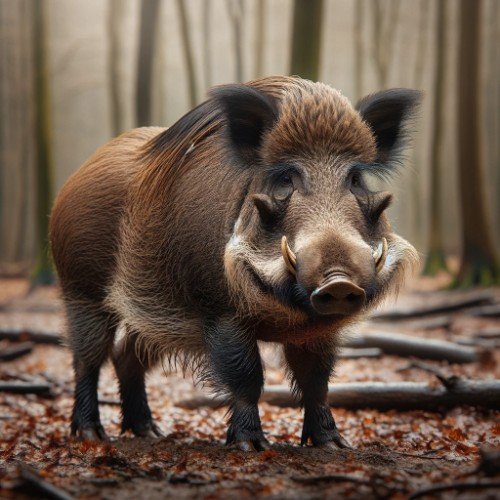In this imaginary face-off between two creatures from distinct continents, we delve into the specific attributes and behaviors of each animal to determine who might have the upper hand in a direct confrontation. The warthog’s combative nature is set against the capybara’s more evasive tendencies, considering their natural habitats and usual opponents.
The Warthog’s Combat Readiness
Physical Attributes and Weaponry
Warthogs are equipped with impressive tusks, sharp enough to inflict serious damage. These tusks, combined with a muscular build (up to 150 kg), make them formidable opponents. They are not just defensive tools but are actively used in conflicts against similar-sized or larger African predators.

Fighting Experience
In the African savanna, warthogs regularly confront threats from formidable predators like lions and hyenas. This environment has honed their defensive skills and instincts, making them more than capable of standing their ground in a fight.
Warthog vs Boar difference
Warthogs and boars, though similar in appearance, have distinct differences. Native to Africa, warthogs are recognizable by their pronounced facial tusks and large, paddle-shaped ears. They are typically larger, with males weighing up to 150 kg, and are known for their ability to dig and live in burrows. Boars, on the other hand, are widespread across Europe, Asia, and North America. They have a more robust build and shorter legs compared to warthogs and lack the pronounced facial features of their African counterparts. Boars are known for their adaptability to various habitats and are generally more aggressive than warthogs.

The Capybara’s Evasive Nature
Lack of Combat Features
Capybaras, despite their size as the world’s largest rodents (up to 65 kg), lack significant natural weapons for combat. Their teeth, although strong, are more suited for a herbivorous diet than for fighting.

Natural Instincts
Capybaras are not typically involved in aggressive encounters. They live in groups and rely on their swimming abilities to escape predators, showing a natural inclination towards evasion over confrontation.

Comparative Analysis: Evasion vs. Direct Confrontation
The Role of Evasion
While evasion is a useful survival tactic, in a hypothetical scenario where escape is not an option, the capybara’s lack of combative skills becomes a significant disadvantage. The ability to flee does not equate to the ability to fight. I would say 80% chance of winning for Warthog
Warthogs in Combat
Contrastingly, warthogs regularly engage in battles with animals of similar or larger size. Their tusks are not only defensive weapons but are also used offensively against predators and rivals. This experience gives them an edge in a hypothetical battle.




